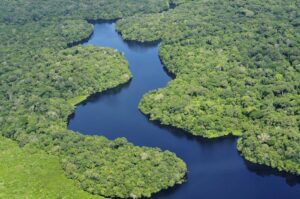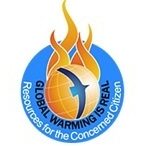 At one time, experts believed that the Amazon couldn’t catch fire because it was just too damp. However, as the ocean near the forest gets warmer, conditions in the Amazon have changed over time. Because the Atlantic is pulling moisture from the forest, it leaves the area vulnerable to fires, like the ones that occurred in 2005 and 2010.
At one time, experts believed that the Amazon couldn’t catch fire because it was just too damp. However, as the ocean near the forest gets warmer, conditions in the Amazon have changed over time. Because the Atlantic is pulling moisture from the forest, it leaves the area vulnerable to fires, like the ones that occurred in 2005 and 2010.
An unprecedented series of events
More than seven years ago, Acre, a state in Brazil, erupted in wildfires. The government was forced to watch as more than a million acres of their forest was damaged. In addition to the deleterious effects on the land, humans suffered as well; smoke caused residents to experience difficulty breathing. At the time, it was thought that the event was an anomaly, something that wouldn’t happen again for another hundred years.
However, not even a decade after the first tragedy in Acre, the area was hit hard again by fires, as was Mato Grosso. While Acre did learn from the previous event, and handled things more efficiently, the surrounding areas struggled to cope with thick smoke and had to ground their planes.
The unseen effects of the fires
Combined, the two fires released almost four gigatons of carbon into the atmosphere. Typically, the Amazon is able to store about this much over the span of ten years. This situation is compounded by an increase in the population; as more people flock to the Amazon, they cut down trees and put up farms.
These farmers use fires as a solution to several problems that they face, increasing the likelihood that an uncontrolled burn will happen once again. Highlighting this cycle is a great idea for a photography portfolio website; bringing attention to this situation can only help future generations.
How the Atlantic Ocean factors in
The ocean seems to have a crucial role in all this. Warmer waters change the direction of winds that carry water. This causes some areas of the Amazon to get more rainfall while other areas remain dry. The good news is that a pattern may be emerging; it appears that the warming occurs about 90 days before the forest starts to dry out. This means that the government could stop people from burning at particularly vulnerable times.
It seems that the best approach to this situation is education rather than a complete ban on burning. Fire serves its purpose and helps many of the people who live in the area. By teaching them how to be mindful of the fires they start, and researching which areas are more vulnerable than others, great strides can be made in this battle.
Photo Credit: ![]()
![]() Some rights reserved by CIAT International Center for Tropical Agriculture and rockville centre rentals
Some rights reserved by CIAT International Center for Tropical Agriculture and rockville centre rentals



Fire serves its purpose and helps many of the people who live in the area. By teaching them how to be mindful of the fires they start, and researching which areas are more vulnerable than others, great strides can be made in this battle.<<< yeah right. the only thing the fire accomplished was burning the hell out alot of forestry and its inhabitants. the fire did surface the correlation between warm waters and fire but in the act of "burning" it didnt help anyone. my question is, how does these huge fires erupt?? who/what causes them?? i get confused, because it negates a dominoe effect. deforestation effects the livelyhood of mankind… makes since if someone government sent ignited it. the people of the area, if they are being careless of the equipment theyre using, need to be more careful and efficient with their craft if carelessness is the case.